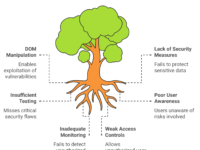Testing software is as much about pushing boundaries as it is about verifying intended behaviors. With mutation testing applied to test data, we shift from verifying software functionality to scrutinizing its robustness under unexpected data conditions. This approach is particularly effective in enhancing negative test cases. Here, we’ll walk through the mechanics of mutation testing, its critical role in test data validity, and offer methods, examples, and insights to help software teams leverage this strategy effectively.
What is Mutation Testing? 🧬
Mutation testing focuses on the quality of test cases by introducing small changes, or “mutants,” into the code or data. This process generates test data that slightly deviates from expected norms, allowing testers to check if the system under test (SUT) appropriately handles invalid or out-of-bounds data inputs. Essentially, it’s a test to see if our tests are doing their job.
Why mutation testing matters: Mutation testing makes negative test cases more rigorous and realistic by covering boundary conditions and invalid data scenarios that might otherwise slip by undetected. This approach reveals edge cases, helping us understand the system’s resilience and making it better equipped to handle anomalies and errors gracefully.
“The best test cases challenge software to fail, not just to succeed.” — Anonymous
Why Use Mutation Testing for Data Validity?
When applying mutation testing to test data rather than the codebase, we aim to confirm that our application handles incorrect or unexpected inputs gracefully. This approach proves invaluable for discovering flaws in data validation, error handling, and security boundaries.
Mutation testing for data validity enables us to:
✅ Verify that input constraints, validations, and sanitizations are effective
✅ Ensure that invalid data does not cause crashes, errors, or unintended behavior
✅ Uncover hidden vulnerabilities that could lead to security flaws
In a digital era dominated by high-stakes data management, robust handling of invalid data can be as crucial as processing valid inputs correctly.
Basic Types of Data Mutations 🔄
To generate meaningful results, we can classify data mutations into three primary types:
| Mutation Type | Description | Example |
|---|---|---|
| Boundary Mutations | Edge cases that test boundary values. | Inputting INT_MAX + 1, or "" for a mandatory field. |
| Character Mutations | Introducing unexpected characters. | Adding @ in names, or \0 in strings. |
| Data-Type Mutations | Altering expected data types. | Feeding a string where an integer is expected. |
Let’s look at each type with practical scenarios.
Practical Example: Boundary Mutations
Let’s say we’re testing an e-commerce application with an “Add to Cart” function that accepts quantities between 1 and 10.
- Step 1: Define valid data.
We start by ensuring that the function works as expected with typical valid data within the range. - Step 2: Introduce mutants.
We test boundary values by introducing mutants like0,11, andINT_MAX. By feeding the system these values, we check for appropriate error handling and see if it limits quantity additions as intended. - Expected Outcome:
Our function should gracefully reject invalid values and alert the user or default to a maximum allowable value. Testing fails if values outside the range (e.g.,11) are accepted or if unexpected crashes occur with extreme inputs likeINT_MAX.
Through boundary mutations, we ensure that our system can handle extreme values without succumbing to errors.
Character Mutations for Security Validation 🔒
Character mutations allow us to test how systems handle unexpected or dangerous inputs, crucial for applications involving user-generated content or forms.
Consider a login form accepting a username and password. By inserting characters like @, <script>, or SELECT * FROM into these fields, mutation testing allows us to assess the system’s defenses against SQL injection or XSS attacks.
- Example Steps:
- Feed in
user@!as a username to test for illegal character handling. - Inject
DROP TABLEas a password and observe the response.
- Feed in
- Expected Outcome:
The system should reject these inputs with error messages indicating invalid entries. No SQL or JavaScript commands should execute on the server.
This test directly protects applications from potential threats by validating input sanitation and escaping mechanisms.
Data-Type Mutations and Boundary Checks
With data-type mutations, we feed data types that differ from the expected format to the SUT, revealing any weaknesses in type validation. This is especially useful for systems that rely on strict data contracts, such as financial or health systems.
For instance, in an API expecting an integer ID, feeding a string such as "abc123" can highlight whether robust type checks are in place. Likewise, substituting a float value for an integer or using extreme float values (3.4E38) can expose mishandled type conversions or rounding errors.
Developing a Mind Map for Mutation Testing 🎨
A mind map can help visualize the mutation testing strategy, guiding testers through different types of mutations and the intended outcomes. Here’s a simple structure:
Each node in this map represents an area to explore, ensuring testers consider multiple avenues for mutation testing.
Tools and Automation for Mutation Testing ⚙️
Several tools can streamline the mutation testing process by automating test data mutation. Here’s a look at a few popular ones:
✅ PIT (Pitest): Mainly for Java, PIT helps in automating mutation testing at the code level.
✅ MutPy: Python-based, effective for testing Python code with mutations in data.
✅ Awesome Fuzzing: Fuzzing or fuzz testing is an automated software testing technique that involves providing invalid, unexpected, or random data as inputs to a computer program.
By integrating such tools, teams can continuously test data validity with less manual effort and ensure consistency in their mutation testing practices.
A Final Thought: Mutation Testing in the Real World
Mutation testing enhances negative test cases by scrutinizing the system’s resilience. Yet, the effectiveness of this approach depends on thoughtful planning and targeted mutations. Overloading your test suite with unplanned mutations can clutter reports and reduce focus on critical issues.
“Quality is never an accident; it is always the result of intelligent effort.” — John Ruskin
Bottlenecks and Practical Challenges 🚧
Here are two real-world bottlenecks often encountered with mutation testing:
- Noise in Mutation Testing: When too many mutants are added indiscriminately, results may become noisy, with numerous “failures” that are false positives. To counter this, prioritize boundary and character mutations that align with the application’s core functionalities.
- Tool Limitations and Integration: Not all mutation testing tools offer seamless integration with existing test automation frameworks. Choosing tools that align well with your tech stack is crucial to avoid lengthy setups and troubleshooting.
Concluding Notes 📜
Mutation testing for data validity isn’t about covering every possible error but about anticipating edge cases in user inputs and system data management. By effectively mutating test data, we can simulate invalid inputs and offbeat scenarios that reveal hidden vulnerabilities. In doing so, we create robust, resilient applications, ready for any data irregularity thrown their way.










